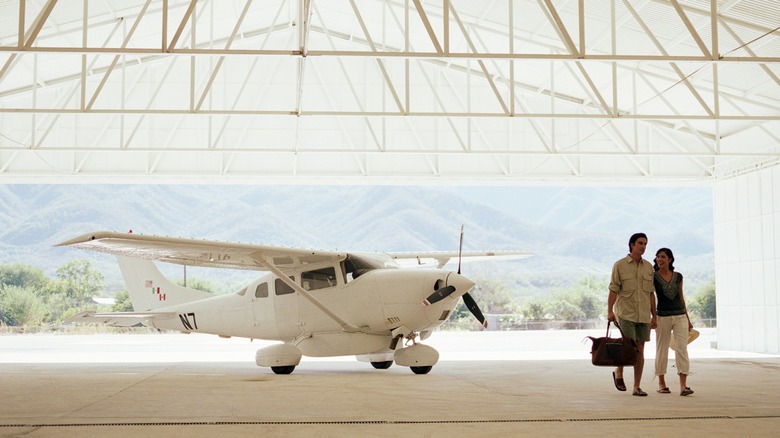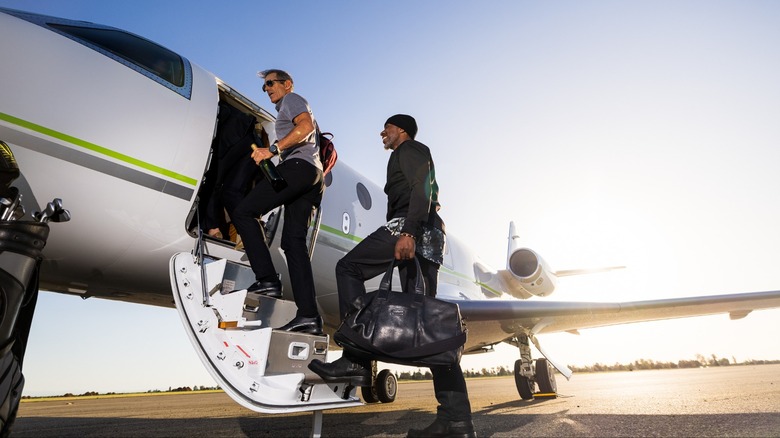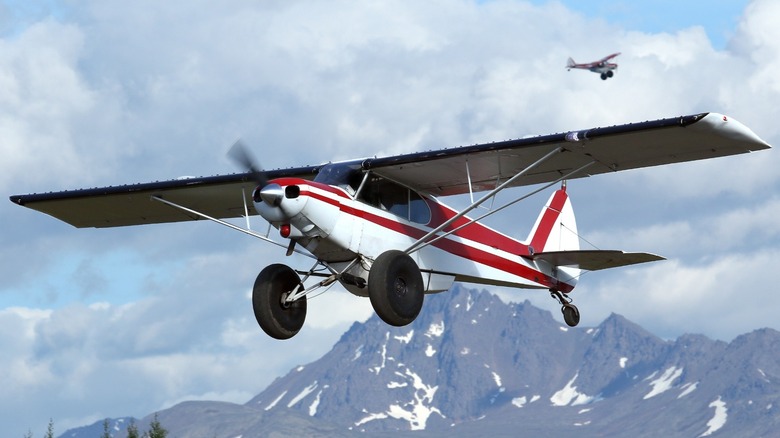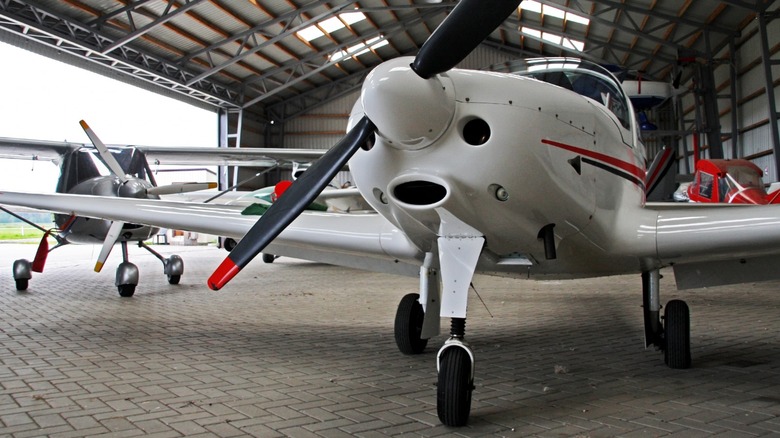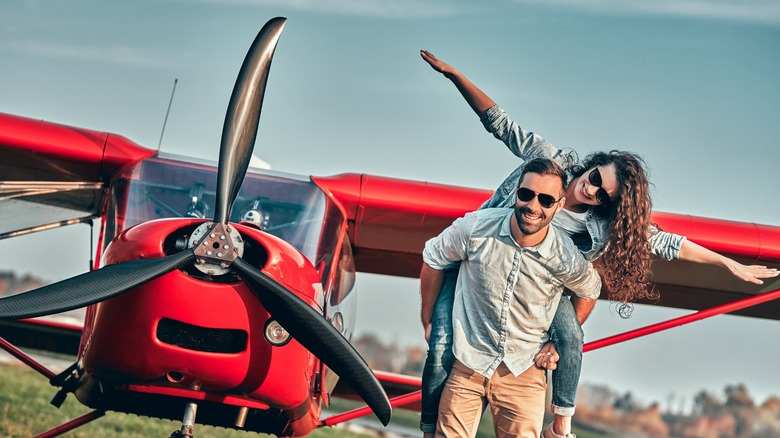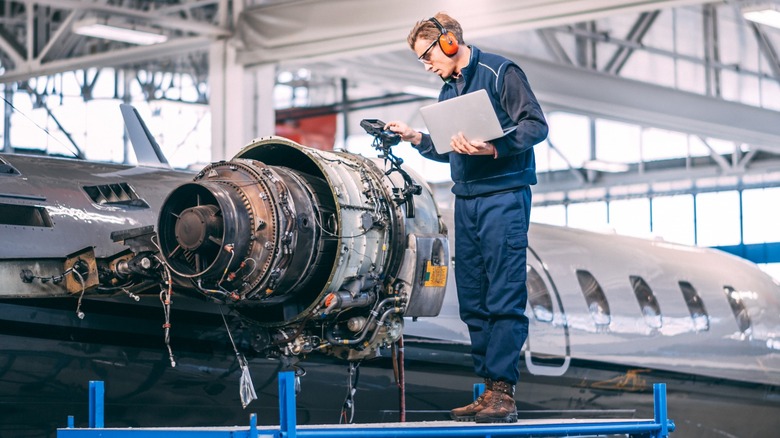5 Questions To Ask When Choosing Your First Plane
Buying your first plane is an exciting prospect. After all, when you have your own aircraft, you can fly anywhere and anytime. But choosing which plane is right for you isn't exactly a straightforward decision, and there are many things to consider before making such a massive purchase.
While you may have been inspired by your peers, colleagues, or even social media influencers to get your own plane, what they fly isn't necessarily suitable for you. For example, Taylor Swift flies on a $40m Dassault Falcon, which is a great aircraft that can fly from New York's JFK airport to pretty much anywhere in Western Europe. But that won't do you any good if you're often flying to Dubai or Australia from the States.
If you frequently fly between cities and need to land at or close to your destination, a private plane might not even fit you well. In that case, you probably need a helicopter. So, before spending hundreds of thousands, or even millions, of dollars, these are crucial questions you need to ask when choosing your first aircraft.
Why do you want to buy a plane?
You should always ask yourself this question before making any major purchase decision: What is your purpose for buying it? And if you're just buying a plane for the flex, you might want to reconsider your purchase, as these machines and their ownership expenses cost a lot.
People often purchase aircraft for two reasons: to save time and to have fun. If you're in the former category, you should consider how often you fly and how fast you need to travel. Owning a light jet like the Phenom 300E makes sense if you fly at least once a week, as it can get you to where you're going faster than a turboprop. However, it will cost more to own and operate, so you have to ensure your time is worth the expense.
If you're buying a plane for personal or leisure travel with your family, you should probably go for smaller planes like the Cessna 182, Cessna 172, or Piper PA-28 Cherokee. Many plane owners actually have this purpose in mind when buying aircraft, and that's why these models are among the most popular single-engine planes.
Of course, some adrenaline junkies buy planes just for the sake of experiencing a high-stakes adventure in the air. If you fall into this category, the easy-to-fly Cessnas and Pipers won't cut it. You have to get an aerobatic aircraft, like the P-51 Mustang, which Tom Cruise also has in his aircraft fleet.
Where do you want to fly?
Nailing down some of your most common destinations will help you determine the range of the aircraft you want to buy. If you're an international entrepreneur, you'll probably want a long-range private jet like the Global 8000, which, as the name suggests, has a range of around 8,000 nautical miles.
On the other hand, if you're based in Canada or Alaska and want to fly in the backcountry to camp and fish, most aircraft, including jets, won't make the cut. For this purpose, you need a plane specifically designed for bush flying, like the tail-dragger Piper Super Cub with large wheels or a Cessna 185 on floats. Then again, if intracity travel is crucial for your work and heavy traffic is causing you to miss out on meetings and opportunities, maybe a chopper is for you. Although these aircraft are much more expensive than some fixed-wing planes and have a shorter range, the ability to land just about anywhere with enough clearance can make them compelling choices.
Whether it's an affordable private jet, a single-engine propeller plane, or a chopper, you'll have a clearer sight of what aircraft type you need once you figure out the destinations you'll be traveling to.
What airports are near you?
Nailing down your common destinations when picking an aircraft is important, but knowing your available parking spot is just as crucial. After all, you can't just park your plane by the side of the road and call it a day. Instead, you must find a suitable airport with enough runway length and aeronautical services to keep your plane safely flying.
If you own a parcel of land with enough space for a small landing strip and want to have your aircraft at home, you're limited to planes that can land at your property. Furthermore, the plane you select should be simple enough to maintain and service at your place, or you should be connected with someone who can go to your location to keep your plane in a safe flying condition.
Larger jets tend to require grander services, which means you'll likely have to park them at bigger airports. For example, if you want to buy a Gulfstream made by one of the best private jet manufacturers in the world, you must be willing to park it at a large airport that can accommodate its size, service, and maintenance requirements. This might also mean you drive an extra hour or two just to get to your plane, especially if you don't have a suitable airfield near your home.
How many people do you fly with?
Weight significantly affects an aircraft's range, so you have to consider how many people you will fly with. If you prefer flying alone or with just one other person, a two-seater Cessna 152 or Diamond DA-20 is more than enough for your needs.
However, if you're a family of four and like traveling with all your gear and equipment, you might want to choose the Cessna 206 Turbo Stationair, which Cessna says can carry 1,441 pounds. That means that even if you fly with four 200-pound adults, you'd still have 641 pounds of useful load for cargo, like tents, clothes, and even bikes.
This is also true for corporate travel. If you often travel alone with just your executive assistant and a pilot, a medium-range jet that seats four people should be enough for your needs. But if you need a full complement of seven staffers or more when you fly and don't want to spend more than $10 million on your plane, a turboprop like the Pilatus PC-12 would do the job.
How much can you spend annually?
Of course, let's not forget the costs of buying and owning a private plane. Even if you have $50 million in the bank, it doesn't mean you can afford the maintenance and services needed for a long-range private jet like Kim Kardashian's Gulfstream G650ER.
That's because owning and operating private planes have fixed and hourly costs you need to cover. For example, a Cessna 172 costs about $50 to $60 per hour to fly (via Thrust Flight), while a Hondajet will set you back by over $2,000 per hour (per Aircraft Cost Calculator). Aside from this, you have to consider many other things when buying a plane, including fixed costs like insurance, registration, taxes, and hangar fees.
The bigger and faster the plane, the higher your expenses will be. So, before buying any plane, get an accurate estimate of your operating and annual costs. That way, you can avoid surprise expenses down the ownership road. Of course, you'll also need to consider who will fly it, how often you will use it, and if renting is an option. But if you've decided to get a plane with your name on it, these are the questions you must ask yourself before making the big decision.
